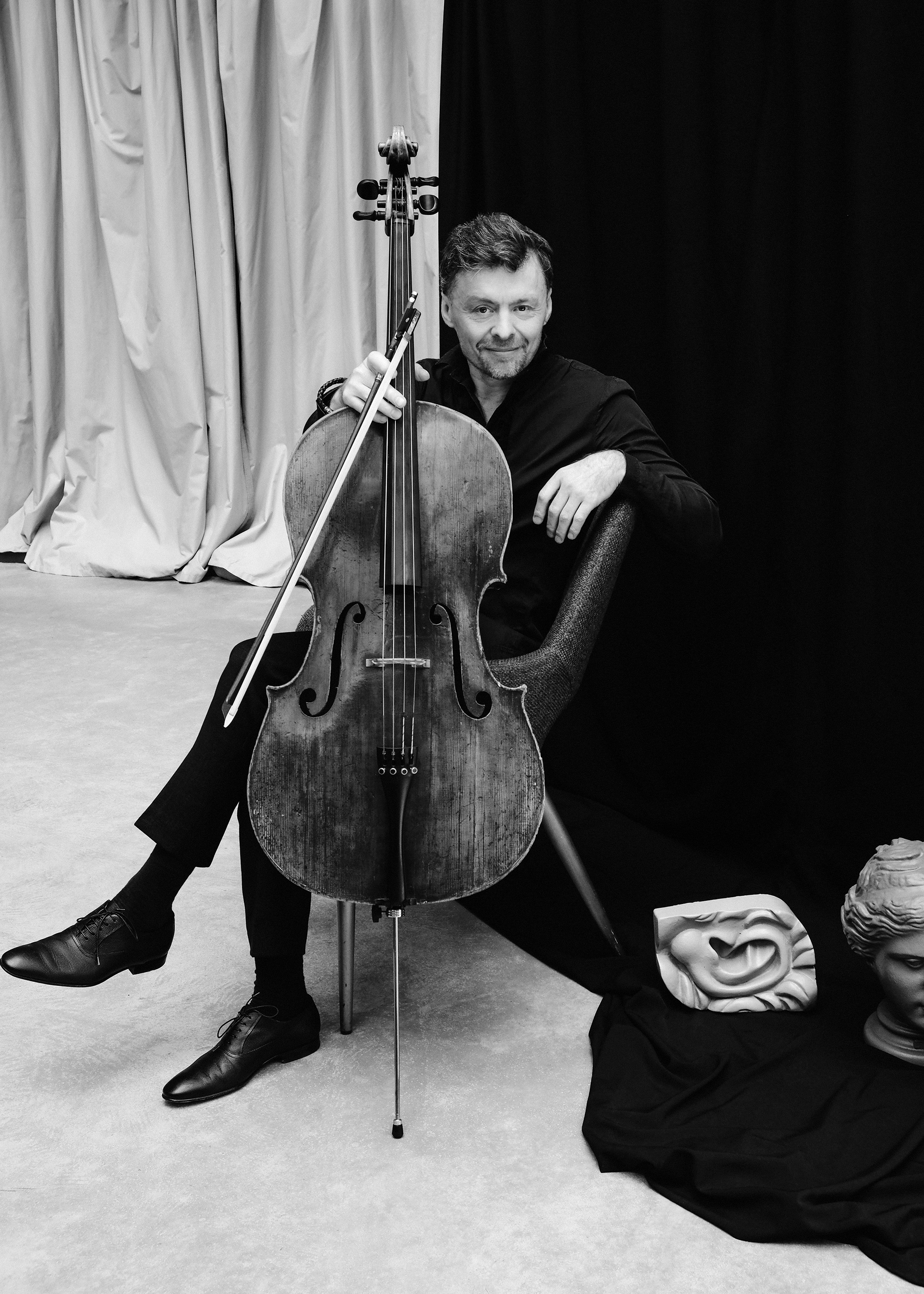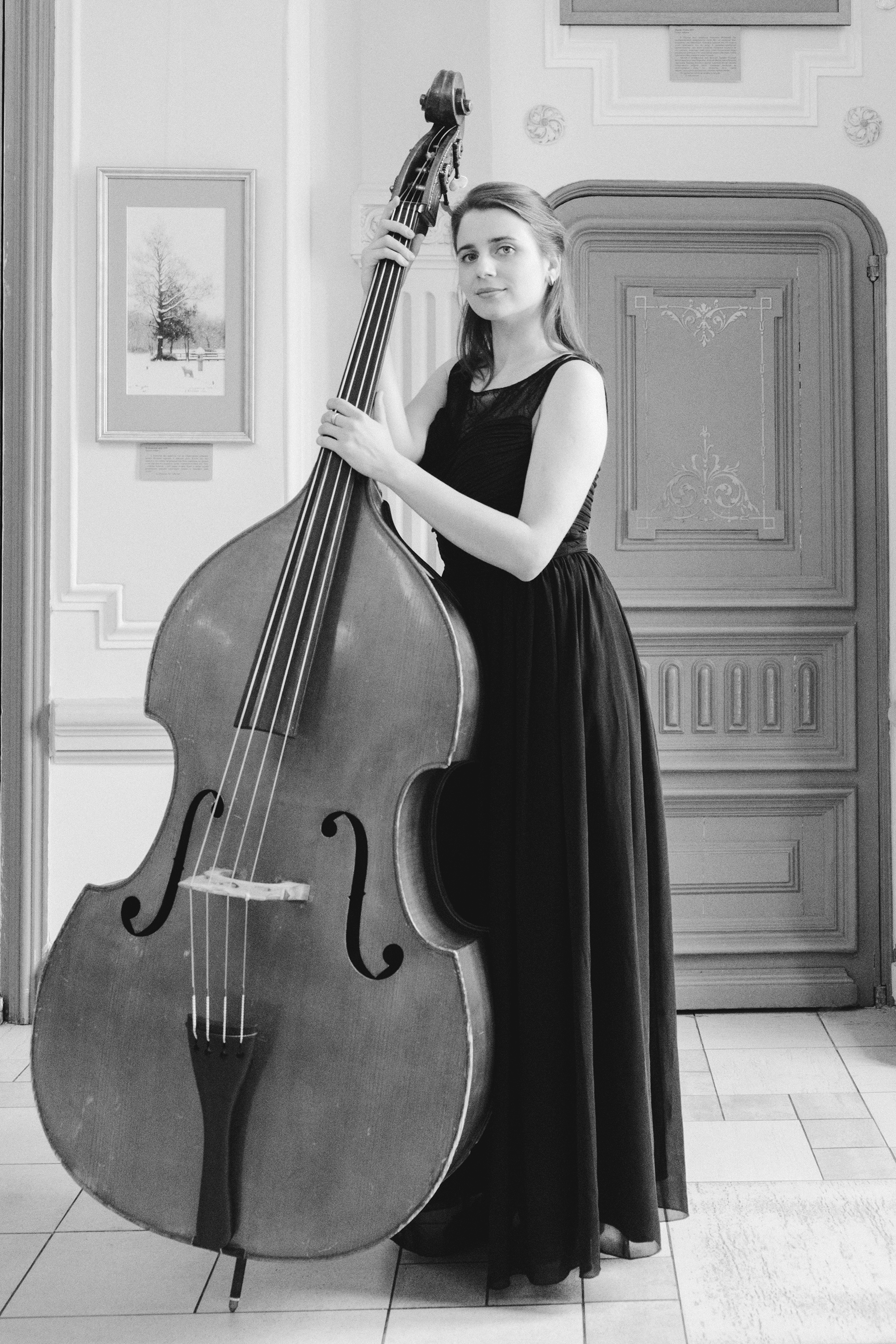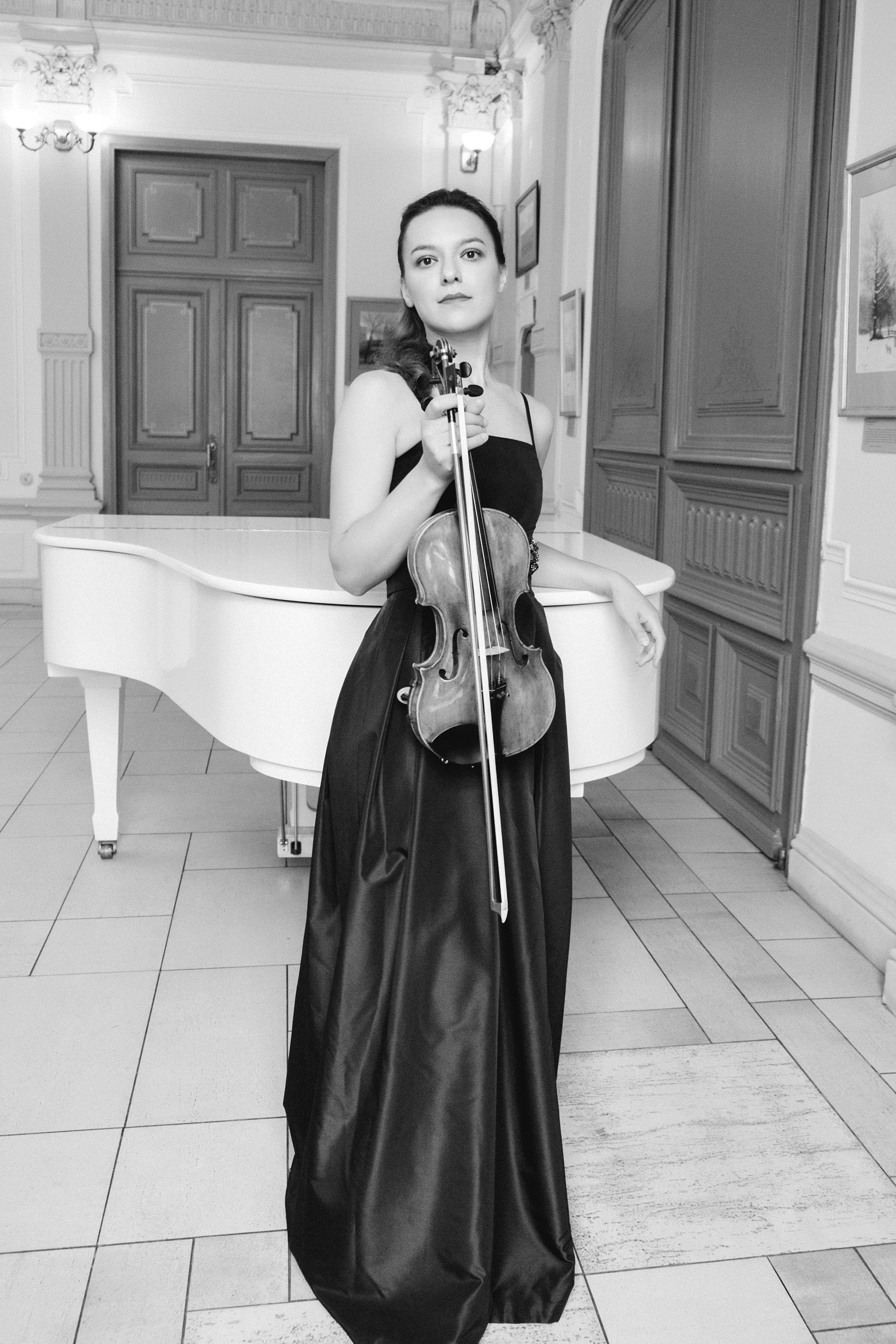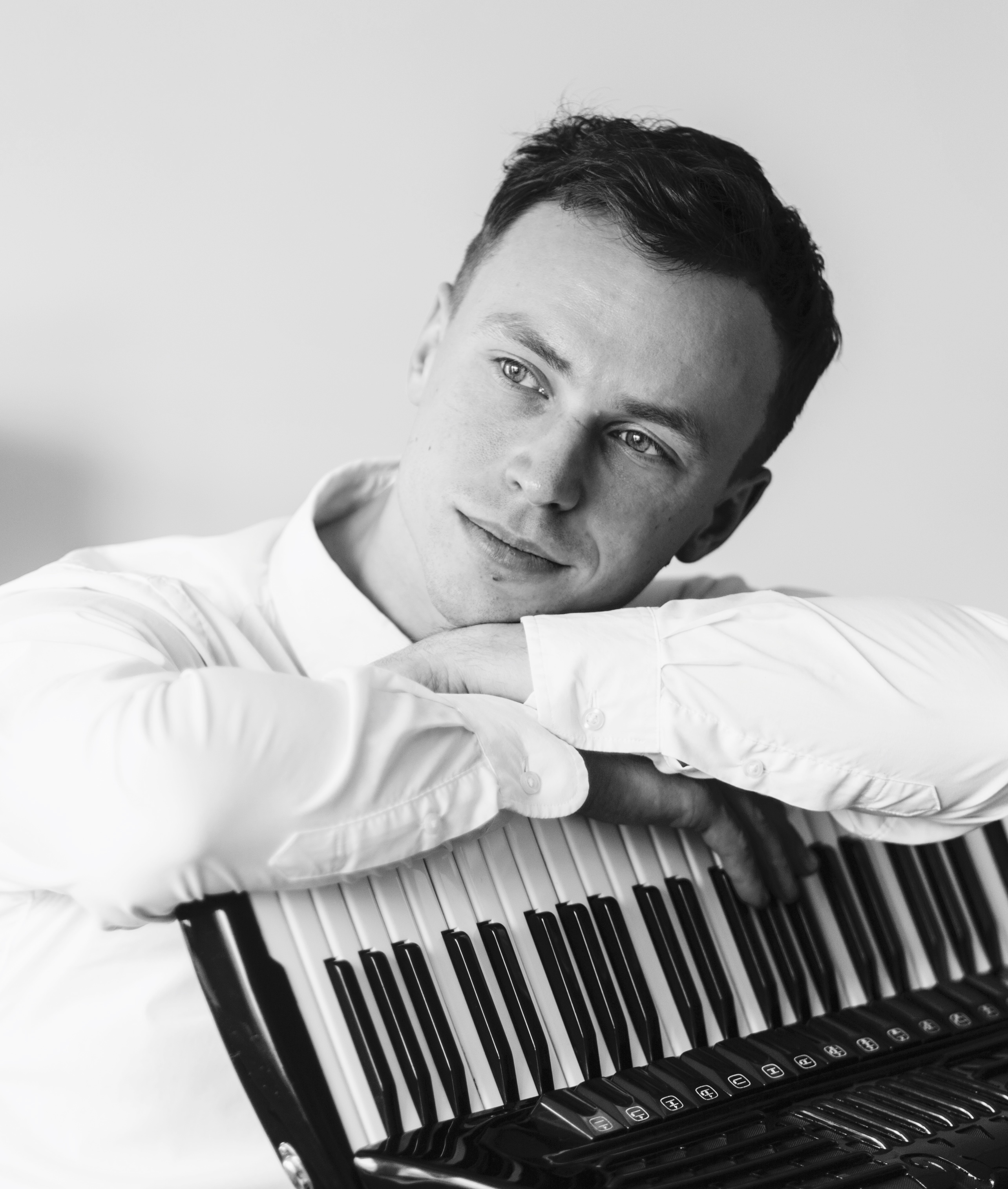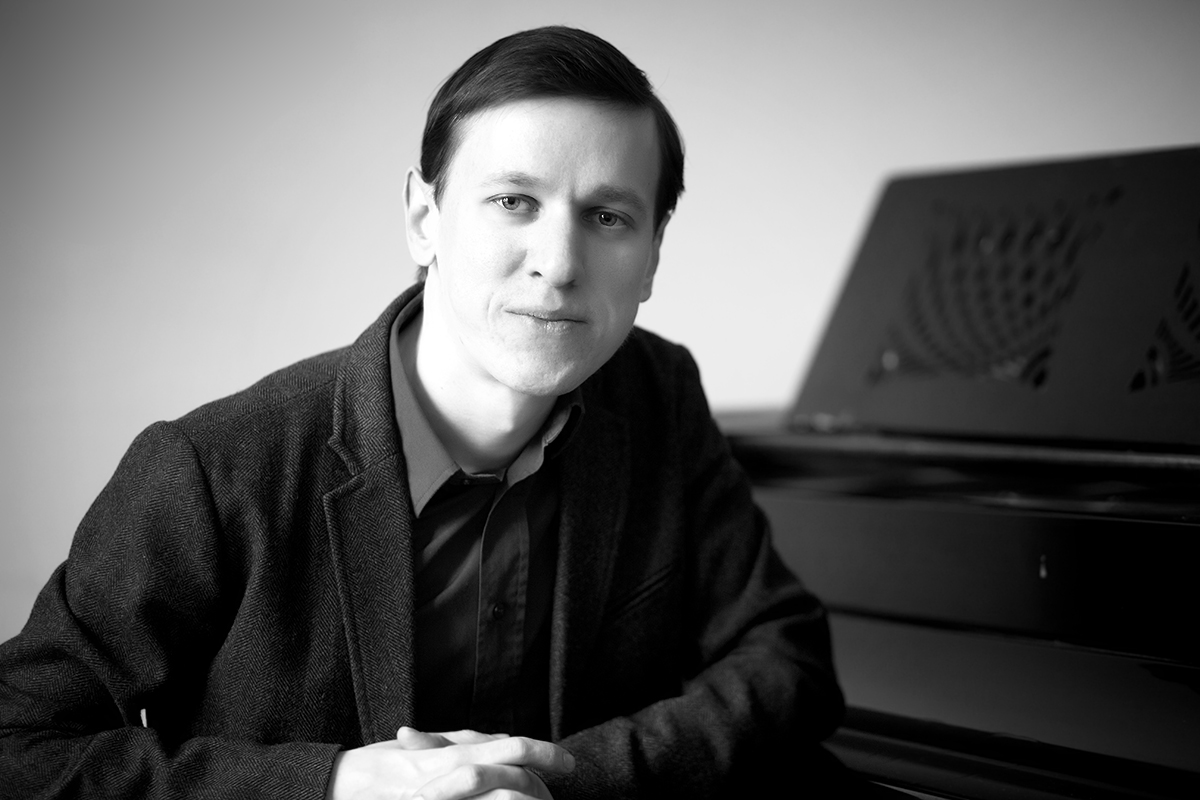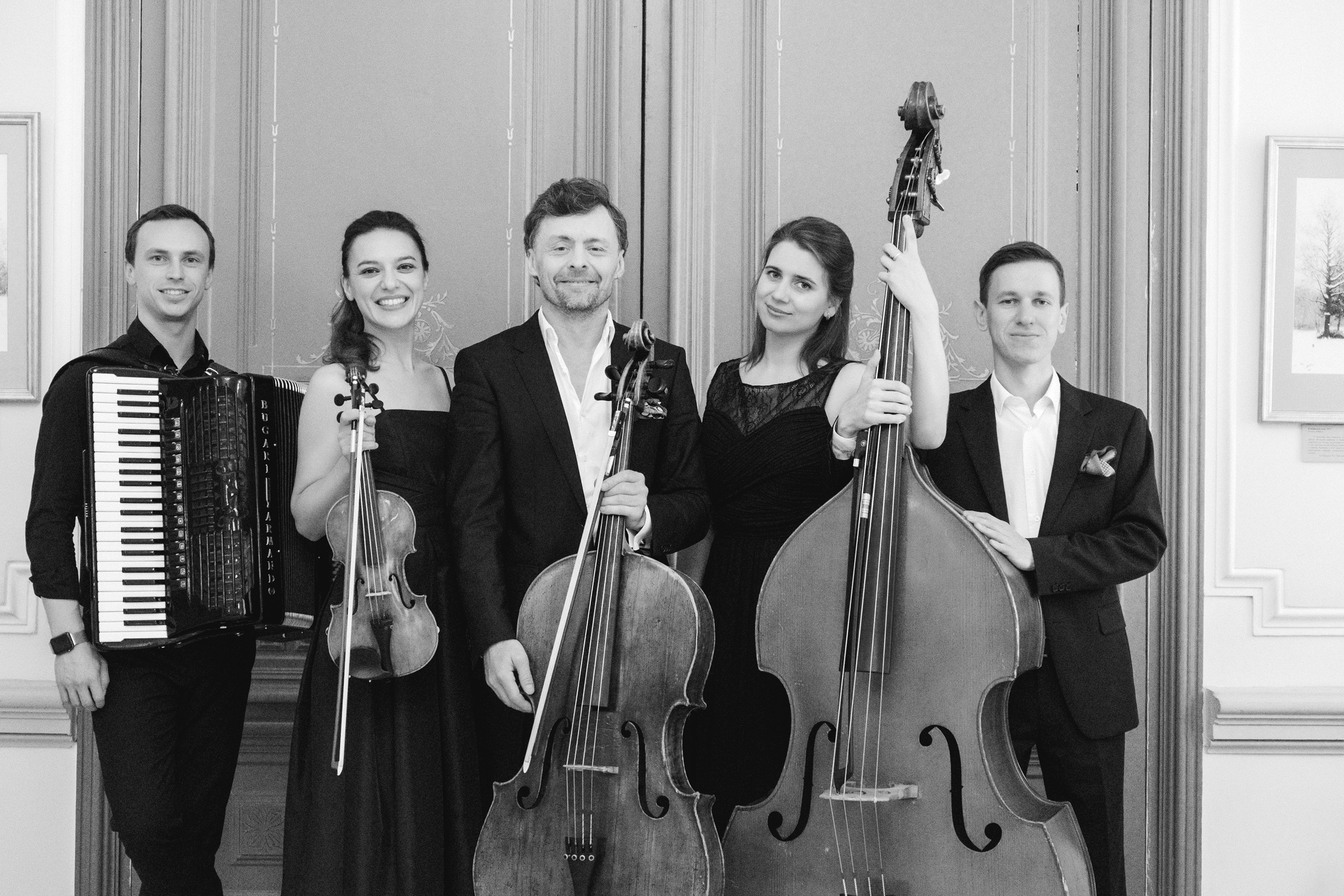6+
Рrogramme:
I PartBolling
Suite for Cello and Jazz Trio
II Part
Piazzolla
“Fugata” for cello, violin, bandoneon, piano, and double bass
“Milonga del Ángel” for cello, violin, bandoneon, piano,
and double bass
“Le Grand Tango” for cello and piano, dedicated to Mstislav Rostropovich
“Ave Maria” for violin and piano
Concerto for Quintet, for cello, violin, bandoneon,
and double bass
24 September 2019 Tuesday
19.00
Chamber hall
19.00 Chamber hall
Chamber music “Angel’s Dance”
Rustam Komachkov, cello; Yulia Pokrovskaya, violin
Darya Popras, double bass; Vitaly Egorov, piano
Alexey Sokolov, accordion; Vladislav Osipov, percussion
Darya Popras, double bass; Vitaly Egorov, piano
Alexey Sokolov, accordion; Vladislav Osipov, percussion
Could a dance pursue a career? Sounds ridiculous, but think about those folk dances that have first appeared in a countryside or in a smoke-filled tavern, but later moved to royal palaces! Menuet, gavot, -- there are quite a few examples.
As early as in the 16th century, composers began to combine those dance into “suite” cycles (“suite” is French for sequence, or rotation). The 18th century was the highest point of the genre, even the great Bach used to turn to it.
The genre of baroque suite was revived in the 20th century. Ravel united it with romantic pianism, Schoenberg added some avant-garde frantic to the genre, and French jazzman Claude Bolling “fused” this powdered baroque with edgy African harmonies and rhythms. Suite for flute and jazz trio is the first example of this unusual approach, and some “descendants” – pieces for violin, trumpet, guitar, and cello – soon followed. The Suite for Cello and Jazz Trio, originally dedicated to the star cellist Yo Yo Ma, will be performed in its entirety in the first part of the concert.
A similar destiny awaited relatively young tango. Sailors, looking for love in ports of Argentina in 19th century, couldn’t have predicted that this local party music will be performed in most prestigious venues for millions of listeners. An Argentinian composer called Astor Piazzolla was talented enough to “consecrate” tango. His famous “Libertango” (1974) freed the genre from the shackles of old forms, and raised it to unimagined heights. Since that, tango’s burning passion has become honorable.
Music of Piazzolla is the 2nd part of the concert, with “Le Grand Tango” for cello and piano as the highlight. This piece was dedicated to Russian cellist, Mstislav Rostropovich.
Like Bollin, Piazzolla couldn’t ignore baroque forms, and Fugata and Concerto for quintet prove it.
“The other Piazzola”, the one who is engaged in a serious dialogue with Eternity, would be shown to us by “Milonga del Ángel” (the piece that elevates the dance related to tango to the divine brightness) and “Ave Maria”.
The works of Bolling and Piazzolla are the great prove that there is no “high” or “low” art. It’s sincerity that is really important. In this it is like a prayer, that can penetrate hearts even if it is said by a most desperate sinner from slum, for angel are much closer to us then we think.
The event is organized by “Art Music Production” LTD
TIN 7734421799
Legal address: 119048, Ul. Efremova, 8
This concert is not included in #зарядисьмузыкой (get charged by music) discount programme of the Moscow Concert Hall “Zaryadye”


